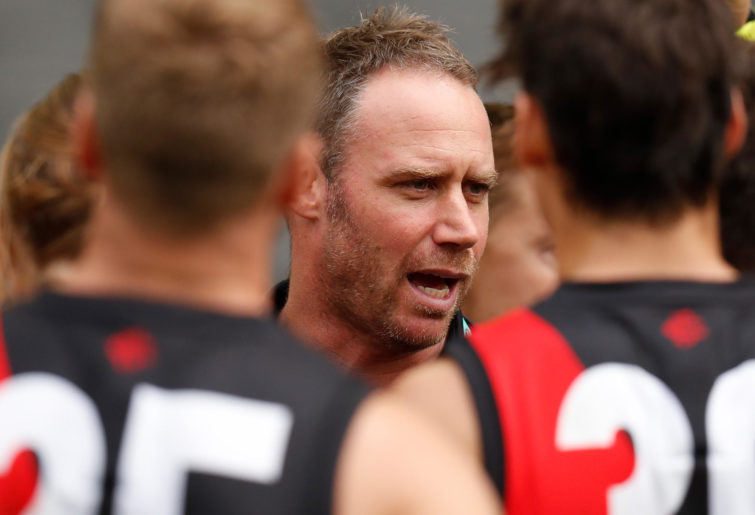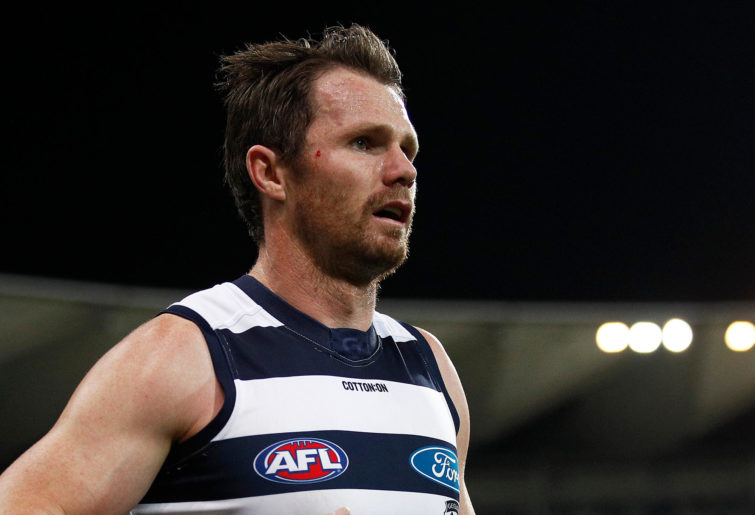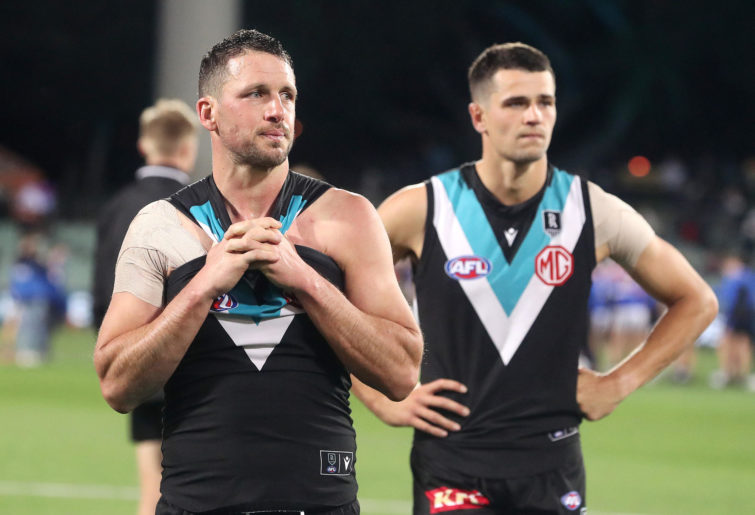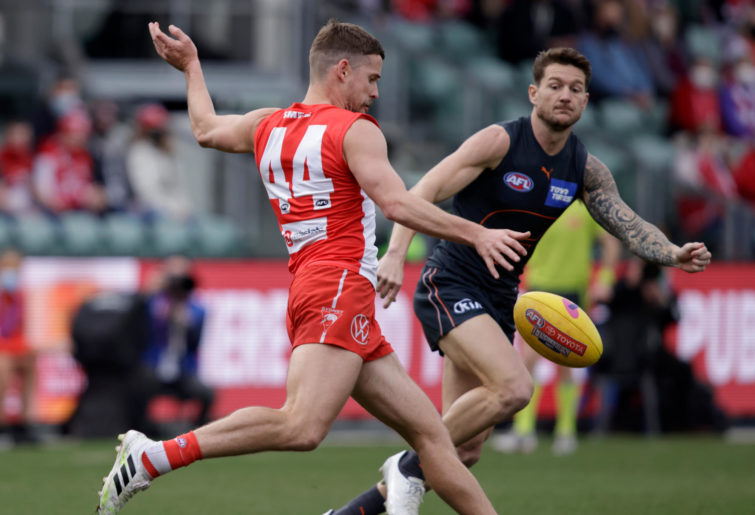A duo of blow-out preliminary finals has set in stone the grand final match-up: Melbourne taking on the Western Bulldogs.
There will be plenty of discussion about the clash – and those two phenomenal teams – in the next fortnight, so I won’t be mentioning them in this piece. Rather, let’s focus on the six teams who were good enough to make finals, but not good enough to make the most of the opportunity.
Brisbane Lions: C
Confession: I am a huge fan of the Brisbane Lions. I am not ashamed to admit that I had eagerly jumped onto their finals bandwagon, and only a schedule clash kept me from heading to their qualifying final against the Demons. As it turns out, the bandwagon was largely based on recency bias from their thrilling clash against the Eagles in Round 23. And I was not particularly disappointed I missed the game, given their 33-point loss only sparked yet another wasted finals campaign.

(Photo by Sarah Reed/AFL Photos via Getty Images)
Brisbane’s struggles in finals bely their talent. I would agree that Eric Hipwood and Dan McStay’s varying absences in their finals hampered the squad, but they have a hugely talented midfield that battles deep with the league’s best. The game against the Bulldogs illustrated this well.
The game delivered in spades, a sentiment that cannot be easily attached to many other games this finals series. The Lions remain a strong team, and given they crashed out of the basis of a one-point loss, they remain a strong chance at a premiership. One reason why they are not getting a worse score is the fact their record begins to look slightly less bad when you consider the two teams that they lost to were the eventual grand finalists.
Essendon: F
Essendon’s insanely awful finals record has been well documented, but the club’s 2021 – surpassing expectations left, right and centre – was reason for optimism. They carried that optimism into their elimination final: their opposition in the Bulldogs had lost their last three home-and-away games and the Bombers had a good record in Tasmania. It goes without saying that the club winning this game would have done wonders for the development of Ben Rutten’s team – and would have made for a very different rest of finals, given the Bulldogs would have been knocked out.

(Photo by Michael Willson/AFL Photos via Getty Images)
The eventual result was a peculiar comfort. No, the Bombers had not suddenly become a genuine finals competitor. Their first half made the game competitive, but their second half was brutal. They did not fire a shot against the Dogs (who were, themselves, firing the first shot in an impressive barrage of finals wins that would take them to the aforementioned grand final). Rutten’s side just stopped trying, at the mercy of both the Dogs and their own struggles. If football’s a mental game, the increased expectations eventually won out.
Geelong: F
And, alas, the Cats’ traditional finals strategy came true: they fell on their sword in a qualifying final but bounced back in a semi-final. As much as their loss to the Power was a three-alarm fire and the win against GWS managed to dampen the flames, the loss to the Dees burnt the entire building down. Writing this piece two days after Friday night’s has given me time to digest the ramifications of that loss. My colleague Stirling Coates has already prognosticated whether or not the Cats’ wider strategy remains viable, and I can’t argue otherwise.

(Photo by Daniel Pockett/Getty Images)
But on the basis of this year’s finals series, I just cannot give the Cats too much credit for their lone win over the Giants. Their performance against Port in the qualifying final was bad; their performance against the Demons was unfathomably lacklustre. It goes deeper than the losses. There is the odd psychology of many players going missing in big games, such a lack of composure, and a list strategy that looks increasingly vulnerable. It was an awful campaign from the Cats.
GWS: C
The Giants landed in a weird position to start the finals: they were not a team scraping in, a la Essendon in the eight and the Lions in the four, and they were not an established finalist, a la the top six. And they proved that, with one excellent win contrasting with a deflating loss than was not unexpected. Their win against the Swans was one of just two games I’ve been genuinely thrilled by – the Lions/Dogs clash was the other. That game saw them add to their record of winning at least one final in every finals appearance in their history.

(Photo by Steve Bell/AFL Photos/via Getty Images)
Their finals campaign was interrupted – not unsurprisingly – by dramas with Toby Greene, and he didn’t play in their clash with Geelong. They ended up losing the game, but Greene’s loss was merely a contributing factor against a side traditionally very good at semi-finals. I’m going to give them the letter-grade definition of averageness. They were very good but lucky to win their first clash, and ran out of steam for their second clash. It was a finals series that won’t really stick with anybody except tribunal fans.
Port Adelaide: D
More than any of the other five teams in this column, there was a huge distinction between Week 1 and Week 3 of finals for the Power. Their qualifying final against Geelong was superb. The fact was they’d won six straight heading into that game: not that anybody noticed, as they had flown under the radar in the final stages of the home-and-away season. Port’s performance that day led at least one outlet to declare Ken Hinkley would never get a greater opportunity at winning an elusive premiership.

(Photo by Sarah Reed/AFL Photos via Getty Images)
And then came Saturday night’s disaster. Comparisons are fraught with danger, but if Geelong’s performance the night before burnt the proverbial building down, Port Adelaide’s capitulation was Chernobyl-esque.
In a way, it is a hard performance to critique because it was so unexpected: on the surface the Power were fit, had a two-week break, and were going for an eighth win on the trot. Perhaps it lay more with the Bulldogs, as brilliant they are, but perhaps it is evidence that Ken Hinkley might be intrinsically the wrong man for the job.
Port Adelaide can be a very good team on their day, there is no doubt about that. But their preliminary final performance is going to live in their minds for a long while, and it is what drags down the club’s grade here in a big, ugly way.
Sydney: B+
One point was the final margin. They failed to accurately convert six consecutive points in the final term when any one of them would’ve won (or drawn) their elimination final. That would probably make it hurt more than the average close loss (if there was such a thing).

(Photo by Grant Viney/AFL Photos via Getty Images)
The Swans blew a very clear opportunity to jump ahead into a semi-final – and without rewriting history, they’d have been a better chance at toppling the Cats than a wounded Giants outfit.
But we have got to judge them on the history that exists, and for however good the Swans were in their enthralling elimination final, their promising season ended prematurely.
The Swans are genuinely building something special. It is encouraging when the margin separating them from heartbreak and moving deeper into finals is a solitary point. This is not a piece for premonition, but they’ll go deeper next year. Fact.


































































































